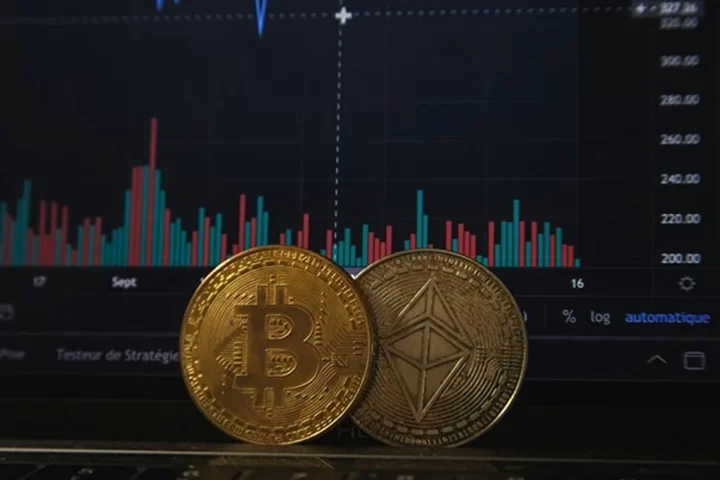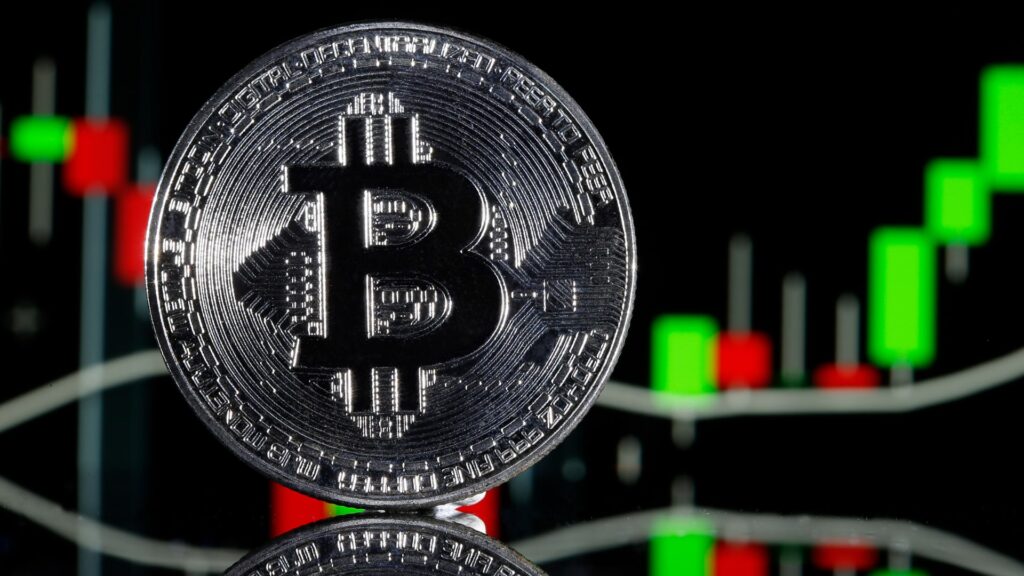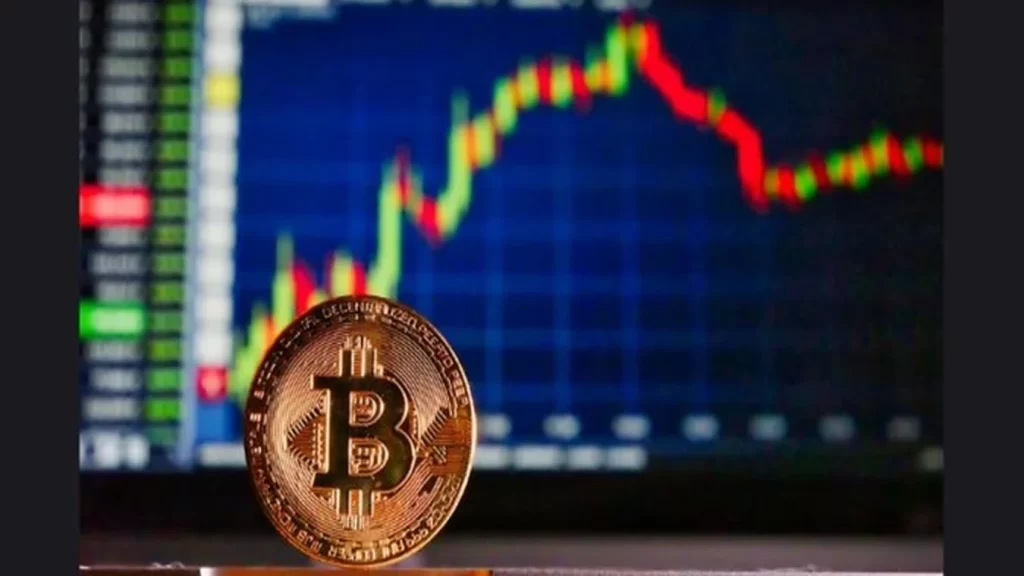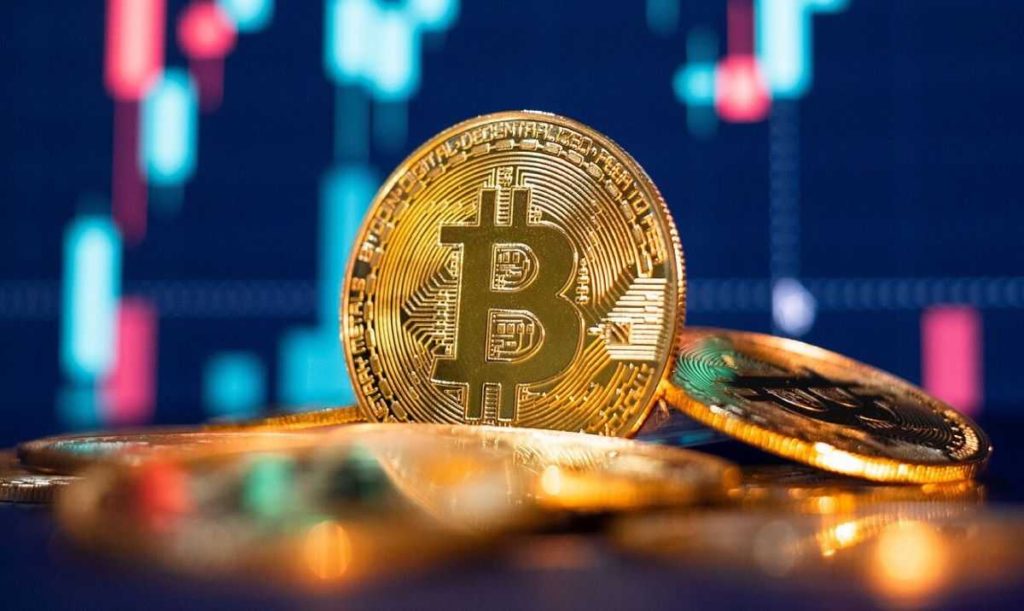Of all the smaller markets that have risen to prominence within the gigantic iGaming market, one area that has been a hive of action since the turn of this decade is the battle for payment method dominance.
Gone are the days of basic, well-known providers such as Visa and PayPal ruling the roost. While they are still the main payment methods that online gamers use, the rise of alternate payment methods has taken a considerable chunk out of the market that these companies have enjoyed for over a decade.
Gaming markets where alternate payments are surging
Alternate payments, such as on-site currencies, have attracted an audience in the world of casino gaming. However, the payment method that has started to cause the biggest stir is the rise of cryptocurrencies.
For those of you who don’t have a solid knowledge of the crypto industry, Bitcoin is most likely the one you’re most familiar with. While it does dominate the sector and remains the largest asset in the digital currency space, casinos have also branched into altcoins such as Ethereum, Solana and XRP, allowing casino gamers to use a host of altcoins for their betting.
With so many different online casino sites and the plethora of payment options emerging in recent years, they’ve become one of the key criteria that experts assess when they are determining the quality of a site.
Of course, there are plenty of different types of casino games, but slots gaming has spearheaded a large chunk of the transformation we have witnessed in iGaming over the last quarter of a century. When experts assess the quality of online slots, it’s just as much about availability as it is about the quality of a game. Those titles that are available to play right across the spectrum of payment methods stand the best chance of maximising their potential audience.
What’s behind the rise in cryptocurrency?
Analysts in the industry believe there could be any number of reasons that cryptocurrency has surged in both casino gaming and the broader gaming industry. Personally, I think it’s down to two things: convenience and visibility.
Crypto gaming platforms require a wallet connection and, obviously, the crypto of your choice. Once you have connected your wallet and approved the transaction, the payment should go through within seconds. The same applies to withdrawals, although some platforms will have their own KYC and withdrawal limits, so read up on them before you begin using their service.
What do we mean by visibility? Since 2013, cryptocurrency has gone from being something that was only ever discussed in the corners of internet forums to BlackRock holding billions of dollars’ worth of it on their balance sheet. This might not mean too much to you if you don’t know the world of finance, but in lay terms, it means big money is flowing into crypto.
With such incredible levels of investment, there’s a trickle-down effect that results in companies, especially platforms like crypto casinos and sportsbooks, looking to scoop up some of the market for themselves. Ultimately, they want to provide an avenue and allow millions of retail investors the opportunity to use their cryptocurrency for products and services they recognise – which is resulting in an explosion in the number of cryptocurrency casinos out there.
That’s not to say cryptocurrency casinos or companies are impenetrable; recent news, such as what happened to Bybit, showcased that they can still be targeted by shady cybercriminals. However, there’s no ignoring that they are arguably more convenient, and they’re certainly the latest big trend in traditional finance.
Traditional payment systems
While cryptocurrency might be making a lot of headway in the gaming market, traditional payment methods have been around for decades and are tried and tested. If you’re used to using traditional payment options and you don’t have a good knowledge of cryptocurrency and other digital assets, then the best bet is to steer clear. If you’re looking to branch out, make sure you do your research.
Traditional payments don’t just cover Visa payments – they encompass older e-wallet systems such as PayPal and Neteller, both of which played a seminal role in the development of the online casino industry, especially in the late 1990s and early 2000s.
Conclusion
Out of all the online payment methods that have emerged in gaming over recent years, cryptocurrency and blockchain systems show the most promise in transforming the industry. E-wallets, PayPal and Apple Pay etc all have their own level of promise, but they still rely on traditional currencies and banking systems.
Cryptocurrency, on other hand, is completely separate from this world – once you have your tokens in your crypto wallet, you cut out the third party in the transaction – the traditional banking system.
Sure, there are other considerations, such as gas fees and fees implemented by specific crypto gaming providers, but on the whole, crypto is proving to be a hit among the gaming fraternity. As long as cryptocurrencies in general can continue to pick up momentum and become a force in traditional financial circles, encourage institutional investment and provide a genuine alternative for gamers, we could see their influence growing significantly over the next decade.
Cryptocurrency exchange-traded products (ETPs) have experienced a significant wave of selling, marking the fifth consecutive week of outflows. The past trading week saw an accelerated liquidation trend, with investors pulling $1.7 billion from the market. This follows the previous week’s outflows of $876 million, bringing the total five-week outflows to a staggering $6.4 billion, according to a report from CoinShares on March 17.
The ongoing sell-off has set a new record, marking the 17th consecutive day of outflows. This represents the longest continuous negative streak since CoinShares began tracking market flows in 2015. Despite this persistent selling pressure, year-to-date (YTD) inflows remain positive, totaling $912 million.
Bitcoin ETPs Bear the Brunt of Outflows
Bitcoin ETPs have been the most affected by the sell-off. The first week of March saw $756 million in outflows, which escalated to $978 million in the following trading week from March 10 to March 14. The cumulative five-week outflows for Bitcoin ETPs now stand at $5.4 billion, leaving only $612 million in YTD inflows by March 14.
Both Ether (ETH) and Solana (SOL) ETPs also saw notable sell-offs, recording outflows of $175 million and $2.2 million, respectively. However, in contrast to the broader trend, XRP ETPs continued to attract investment, with inflows totaling $1.8 million over the past week.
Regional Outflows and Key Issuers Affected
Among ETP providers, European crypto ETP firm 21Shares recorded the largest outflows last week, amounting to $534 million. While Europe saw substantial selling, the United States remained the dominant region for outflows, with investors withdrawing $1.2 billion from its crypto ETP market.
BlackRock, one of the largest crypto holders, experienced significant outflows as well. The investment giant saw $401 million leave its ETPs in the past week, pushing its month-to-date outflows to $594 million.
A Few Issuers Still Holding Inflows
Despite the broad market trend of liquidations, ProShares emerged as one of the few issuers maintaining inflows. The firm recorded $2 million in inflows month-to-date (MTD) and remained one of the three major issuers to hold positive YTD inflows as of March 14. Other issuers managing to retain positive YTD inflows include BlackRock and ARK Invest.
Additionally, Binance has seen a drastic reduction in its assets under management due to a seed investor exit, leaving it with only $15 million in assets, according to CoinShares’ James Butterfill.
Bitcoin recently dropped to a four-month low of $76,700, raising concerns about whether the market has entered a bearish phase. However, several indicators suggest that this correction may have already reached its lowest point.
1. Historical Comparisons to Previous Market Cycles
Some fear that Bitcoin is entering a bear market similar to past cycles. However, the current price behavior differs from the major crash in late 2021, when Bitcoin fell 41% from $69,000 to $40,560 within 60 days. A similar drop today would suggest a decline to $64,400 by the end of March.
Looking at past corrections, the recent pullback closely mirrors a previous 31.5% drop from $71,940 to $49,220, which occurred over a similar timeframe. This historical context suggests that Bitcoin’s recent decline is not necessarily the start of a prolonged bear market.
2. The U.S. Dollar’s Weakening Trend
One major factor influencing Bitcoin’s price is its inverse correlation with the U.S. dollar. During the 2021 bear market, the U.S. dollar strengthened significantly, creating a challenging environment for Bitcoin. This time, however, the U.S. dollar index has been declining, which historically supports Bitcoin’s price stability.
A weakening dollar often drives investors toward alternative assets, including Bitcoin. If this trend continues, it could provide additional support for Bitcoin’s price and help confirm that the recent low is the bottom of the correction.
3. Stability in Bitcoin Derivatives Markets
Another key indicator pointing to market stability is Bitcoin’s derivatives market. The annualized premium on Bitcoin futures remains at around 4.5%, even after the recent 19% price drop. This suggests that traders are not panicking and that institutional demand for Bitcoin remains steady.
For comparison, during a previous sharp market crash, Bitcoin’s futures premium dropped below 0%, signaling extreme fear and excessive selling. The fact that this has not happened in the current downturn suggests that the correction may have already run its course.
Additionally, the funding rate for perpetual futures remains balanced, indicating that there is no significant dominance of either long or short positions. This neutral positioning suggests that traders are not expecting further drastic declines.
4. Market Reaction to Economic Uncertainty
Traders are also closely watching economic developments, particularly concerns over government fiscal policies. If policymakers fail to reach agreements on key financial decisions, uncertainty could create volatility in traditional markets, leading investors to seek alternative assets like Bitcoin.
Historically, economic uncertainty has led to increased interest in Bitcoin as a hedge against financial instability. If this pattern continues, Bitcoin’s price could stabilize and recover from its recent correction.
Conclusion
Bitcoin’s recent drop to $76,700 may seem alarming, but multiple indicators suggest that the market has already found its bottom. Historical comparisons, the weakening U.S. dollar, stability in the derivatives market, and broader economic factors all point to a potential price recovery. While short-term fluctuations may continue, the overall outlook remains positive, with Bitcoin likely to resume its upward trend in the coming months.
Sam Bankman-Fried, the former CEO of FTX, has been placed in solitary confinement amid ongoing legal proceedings. The decision to isolate him has raised concerns regarding the conditions of his incarceration and the broader implications for high-profile financial crime cases.
Sources indicate that Bankman-Fried’s legal team has expressed concerns about his treatment, arguing that solitary confinement could severely impact his mental and physical well-being. His lawyers continue to advocate for improved conditions and fair treatment within the prison system.
Media Attention and Public Reaction
The situation has drawn significant public attention, particularly given the scale of the FTX collapse and the allegations surrounding Bankman-Fried’s financial misconduct. Discussions around his prison conditions have fueled debates on how high-profile white-collar criminals are treated within the justice system.
Speculation has also arisen regarding the motivations behind his confinement, with some suggesting it is a precautionary measure due to the nature of his case, while others believe it reflects broader issues within the prison system.
Legal and Judicial Developments
Bankman-Fried’s legal battles continue as his defense team works to challenge aspects of his conviction and sentencing. The case remains a focal point in discussions about cryptocurrency regulation, financial accountability, and the consequences of corporate fraud.
The unfolding events surrounding his incarceration highlight the complexities of handling financial crime within the legal system. Observers will closely monitor further developments as legal proceedings continue and as concerns over his treatment in prison persist.
Bitcoin’s price took a hit following the official announcement of the U.S. Strategic Bitcoin Reserve. Initially trading around $90,400, BTC dropped over 6% to $84,979 in the hours after the news broke. The reserve will only include Bitcoin seized in criminal cases, meaning no direct market purchases by the government—an aspect that many investors had hoped for.
This led to a shift in market sentiment, as traders adjusted their expectations for government involvement in Bitcoin markets. Analysts now believe the short-term upside for BTC may be limited, given the lack of fresh institutional demand from this initiative.
Technical Indicators Show Mixed Signals
From a technical standpoint, Bitcoin’s price movement suggests that it may struggle to break above key resistance levels in the near term. Analysts have pointed out a descending triangle pattern forming on the four-hour chart, typically a bearish signal.
For Bitcoin to regain bullish momentum, it would need to break and sustain levels above $93,000. Until then, it remains vulnerable to further pullbacks and sideways trading.
Long-Term Implications for Bitcoin Adoption
Despite the short-term price reaction, some analysts see this announcement as a net positive for Bitcoin’s legitimacy. The fact that a strategic reserve for BTC now exists demonstrates growing institutional and governmental acknowledgment of Bitcoin as an asset class.
One key argument supporting Bitcoin’s long-term value is its role as a non-inflationary asset, particularly in contrast to fiat currency. Some financial strategists believe that while the current market response is underwhelming, this reserve could be a stepping stone toward greater Bitcoin integration into national financial systems.
Bitcoin traders and investors are preparing for what could be a significant price movement in the coming weeks, with market analysts pointing to March 25 as a crucial date. The cryptocurrency is showing signs of strength as the U.S. dollar weakens, setting the stage for a potential breakout.
U.S. Dollar’s Decline Fuels Optimism for Bitcoin
The value of the U.S. dollar has been slipping, reaching its lowest point in months. A weaker dollar historically drives investors toward alternative assets, including Bitcoin, which is often viewed as a hedge against traditional financial instability.
Global money supply trends also indicate a surge in liquidity, which could further boost Bitcoin’s momentum. Some analysts believe this expansion in capital flow is creating ideal conditions for a strong market rally.
Bitcoin’s Correlation With Liquidity Expansion
Market observers have noted that when global money supply increases, assets like Bitcoin tend to follow an upward trajectory. Analysts tracking financial trends have suggested that Bitcoin’s price could see a significant boost as liquidity continues to expand.
One prominent market commentator has suggested that March 25 could mark the beginning of an “epic” rally for Bitcoin, as well as for traditional stocks. If this prediction holds true, it could align with broader market cycles that have historically driven significant gains in digital assets.
Influence of U.S. Economic Policies
Recent policy shifts in the U.S. have played a role in shaping investor sentiment. Adjustments to trade policies, as well as ongoing fiscal changes, have contributed to the weakening of the dollar. As a result, many investors are looking toward Bitcoin as a store of value in uncertain economic conditions.
Upcoming Developments and Market Expectations
A key event on the horizon is the upcoming White House crypto summit, which could further influence Bitcoin’s trajectory. Discussions around digital assets and financial policy are expected to take place, with speculation mounting over potential regulatory developments.
The prospect of an official Bitcoin reserve has also contributed to growing optimism in the market. Some industry leaders believe that such a move would signal a major shift in institutional acceptance, reinforcing Bitcoin’s long-term value proposition.
What’s Next for Bitcoin?
While analysts remain optimistic, they also caution that volatility remains a defining feature of the crypto market. External factors, including potential regulatory shifts and macroeconomic trends, could still impact Bitcoin’s price movement.
For now, market participants are closely monitoring developments, with many anticipating that March 25 could serve as a turning point for Bitcoin’s next major rally.
COTI has unveiled the Africa Tokenization Council, an ambitious initiative launched in collaboration with strategic partners to drive blockchain and artificial intelligence (AI) adoption across Africa and the Middle East. This pioneering effort seeks to unite African officials with global leaders in blockchain and tokenization, fostering investment and innovation within the region.
With a rapidly growing technology-focused population and increasing interest in digital assets, African countries are poised to make a significant impact on the global blockchain ecosystem. The Africa Tokenization Council aims to convene leaders, investors, and industry practitioners through symposiums dedicated to regulatory frameworks, partnerships, investment strategies, and the necessary pathways for a thriving tokenization ecosystem.
The initiative will also focus on setting standards and regulatory advancements that support seamless ownership structures, thus creating an environment conducive to international investment in real-world asset (RWA) tokenization.
Unlocking Africa’s Market Potential
The combination of Africa’s burgeoning fintech landscape, regulatory advancements, and a thriving entrepreneurial spirit presents a unique opportunity for blockchain-driven economic transformation. Africa and the Middle East collectively hold a GDP exceeding $5 trillion, with a history of adopting mobile technologies, fintech solutions, and cryptocurrency at an accelerated pace compared to traditional economic environments.
The Africa Tokenization Council, backed by prominent government officials, investors, and practitioners, is well-positioned to facilitate this shift. With strong involvement from Saudi Arabian leadership and COTI’s advanced privacy-focused blockchain technology, the council envisions a future where tokenization becomes an integral part of economic growth and financial inclusion.
Key Figures Leading the Initiative
Several influential figures have joined the Africa Tokenization Council, bringing their expertise in energy, finance, and blockchain:
- Dr. Mansour Almalik holds a Ph.D. in Petroleum Engineering from Texas A&M University and has over two decades of experience in government and academia. He has previously served as a Senior Advisor to the Saudi Arabian Ministry of Petroleum and Mineral Resources and has represented Saudi Arabia in the United Nations’ Science and Technology Committee. As the Chairman of Attwar Group, his interests span energy, fintech, and artificial intelligence.
- Alaa Bishara is a seasoned entrepreneur and crypto investor with a background in traditional real estate. His extensive experience in managing high-net-worth portfolios has positioned him as a key player in the intersection of real estate, fintech, and digital innovation. His commitment to Real World Asset (RWA) tokenization underscores his vision for a financially inclusive future driven by blockchain technology.
- Shahaf Bar-Geffen (CEO of COTI) and Joshua Maddox (Chief Ecosystems and Partnerships Officer of COTI) have also joined the council, reinforcing the company’s commitment to fostering blockchain adoption in Africa.
Global Events and Strategic Collaborations
The Africa Tokenization Council is set to host a series of strategic symposiums and roundtables aimed at connecting African governments with blockchain initiatives, global investors, and industry experts. These events will bring together diverse stakeholders, including:
- Blockchain practitioners dedicated to driving tokenization efforts for economic expansion.
- Government officials and regulatory bodies exploring blockchain’s potential in governance and finance.
- Investors (both local and international) seeking opportunities in Africa’s tokenized asset space.
- Technical developers and blockchain experts who will contribute to the infrastructure supporting tokenization projects.
- Market distribution partners to facilitate the adoption of tokenized assets across various industries.
The insights gained from these events will be critically analyzed and assessed for risks, ensuring that the council’s findings contribute to the development of strategic investment pathways and practical implementations of blockchain-based tokenization initiatives.
COTI’s Role as a Core Infrastructure Provider
COTI, a leading blockchain infrastructure provider, will play a crucial role in the Africa Tokenization Council’s mission by leveraging its expertise in AI and blockchain. As the only provider offering “Privacy on Demand,” COTI ensures that privacy-compliant blockchain solutions are accessible, welcoming participation from other major blockchain providers and partners.
COTI’s technology delivers a fast, scalable, and secure privacy layer for AI-driven and blockchain initiatives. Its permissioned privacy model enables secure on-chain data sharing while ensuring regulatory compliance—a major barrier that has traditionally slowed the adoption of RWAs on the blockchain.
Addressing Privacy Concerns in Tokenization
Tokenization involves moving real-world assets—including infrastructure, natural resources, and financial instruments—onto blockchain networks. Despite its potential, institutions have been hesitant to adopt blockchain without comprehensive privacy protections. Public blockchains’ transparency presents compliance challenges for corporations that must safeguard sensitive user data.
COTI addresses this challenge by providing permissioned privacy, ensuring that relevant authorities can access compliance and reporting data without exposing confidential information. This feature makes blockchain adoption feasible for enterprises and governments seeking to tokenize large-scale assets.
Scaling Tokenization for National Economies
The Africa Tokenization Council aims to facilitate tokenization at the national infrastructure level. By leveraging blockchain’s transparency and efficiency, the council envisions large-scale projects that will drive economic growth across Africa and the Middle East. COTI’s robust infrastructure will serve as a foundational pillar for these initiatives, positioning itself as a key enabler of blockchain-driven economic transformation.
Bitcoin has long been considered a hedge against economic instability, often referred to as “digital gold.” However, recent market movements have put this perception into question as Bitcoin’s price has seen a sharp decline while traditional safe-haven assets like gold have surged.
Bitcoin’s Decline Amid Global Market Tensions
The recent downturn in Bitcoin’s price coincided with increasing economic uncertainty. With global financial markets reacting to policy shifts and trade disruptions, investors have flocked to assets traditionally viewed as safe havens. This shift has left Bitcoin struggling to maintain its value, with a significant price drop occurring in a short span of time.
Gold Surges While Bitcoin Faces Volatility
As Bitcoin’s value plummeted, gold has reached new highs, reinforcing its status as a preferred store of value during times of uncertainty. This stark contrast in performance has fueled debate over whether Bitcoin can truly hold its place as a safe-haven asset or if it remains a high-risk, speculative investment.
A cryptocurrency trader has reportedly made nearly $7 million in profits following a major government announcement related to digital assets. By placing large leveraged bets just before the news broke, the trader was able to capitalize on the sudden surge in market prices.
The timing of the trades has raised speculation about whether the trader had prior knowledge of the announcement. Regardless, the massive gains highlight the volatility of the crypto market and the potential for major profits when traders make the right moves at the right time.
Using High Leverage for Maximum Gains
The trader, who has been identified as a major player in the market, deposited nearly $6 million into a derivatives exchange and used 50x leverage to open long positions on Bitcoin and Ethereum. This aggressive trading strategy allowed them to control a position worth around $200 million.
With such a high level of leverage, even a small price movement in their favor resulted in massive returns. However, this approach also carried significant risk—had the market moved in the opposite direction, the losses could have been catastrophic.
Government Announcement Sparks Market Surge
The market movement that fueled the trader’s gains came shortly after a policy announcement confirming the creation of a U.S. Crypto Strategic Reserve. The announcement caused a rapid increase in the price of Bitcoin, Ethereum, and several other major cryptocurrencies.
- Bitcoin surged over 11%, reaching a high of $95,000.
- Ethereum climbed by 14%, hitting $2,541.
- Other digital assets, including Solana, XRP, and Cardano, also saw strong gains.
The trader placed their first major bet less than an hour before the official announcement, leading to speculation about whether they had inside knowledge of the upcoming news.
Questions Around Possible Insider Trading
Given the precision of the trades and their proximity to the announcement, questions have emerged about whether insider trading played a role. While there is no concrete evidence, such situations often lead to scrutiny from regulators and exchanges.
With crypto markets still lacking the strict oversight found in traditional financial markets, cases like this highlight the ongoing challenges in ensuring fair and transparent trading practices.
Conclusion
A trader managed to turn a well-timed bet into nearly $7 million in profit, leveraging a market-moving government announcement to their advantage. Whether it was sheer luck or something more, the case underscores the unpredictable nature of the crypto market and the massive potential gains that come with high-risk trading strategies.
Cardano has seen a significant rise in value, with its price climbing steadily in recent trading sessions. This increase comes amid growing market confidence and renewed interest in blockchain projects.
The surge in price reflects a combination of technical factors, investor sentiment, and broader market movements. With increased demand and stronger buying pressure, Cardano has emerged as one of the top-performing assets in recent days.
Factors Driving the Rally
Several key factors have contributed to the rise in Cardano’s price:
- Market Momentum – The overall crypto market has been experiencing a positive trend, with several major assets showing gains.
- Increased Adoption – More projects and platforms are integrating Cardano’s technology, fueling long-term confidence.
- Institutional Interest – Growing attention from larger investors has added support to the asset’s price movement.
- Technical Breakout – Price charts indicate that Cardano recently broke through resistance levels, triggering further buying activity.
These combined elements have led to a sharp increase in demand, helping to push the asset’s value higher.
How Long Will the Rally Last?
While Cardano’s recent rise is encouraging, the question remains whether the momentum can be sustained. Market analysts are watching key resistance levels to determine if the price surge will continue.
Several factors could influence whether Cardano maintains its gains, including:
- Broader market conditions – A continued rally in the crypto space could provide further support.
- Upcoming developments – New updates and partnerships could boost confidence in Cardano’s future.
- Investor sentiment – If confidence remains high, the price could hold steady or move even higher.
However, volatility is always a factor in the crypto market, and sudden shifts could impact the current trajectory.
What This Means for Cardano Holders
For those holding Cardano, the recent price increase is a positive sign. A sustained uptrend could attract more attention to the asset, potentially leading to further gains.
That said, staying informed about market conditions remains crucial. With fluctuations always a possibility, monitoring price levels and broader trends can help investors make informed decisions.
Conclusion
Cardano’s price surge highlights growing confidence in the project and the broader crypto market. With increased demand, strong technical indicators, and positive sentiment, the asset has seen impressive gains. Whether this trend continues will depend on market movements and investor behavior in the days ahead.









